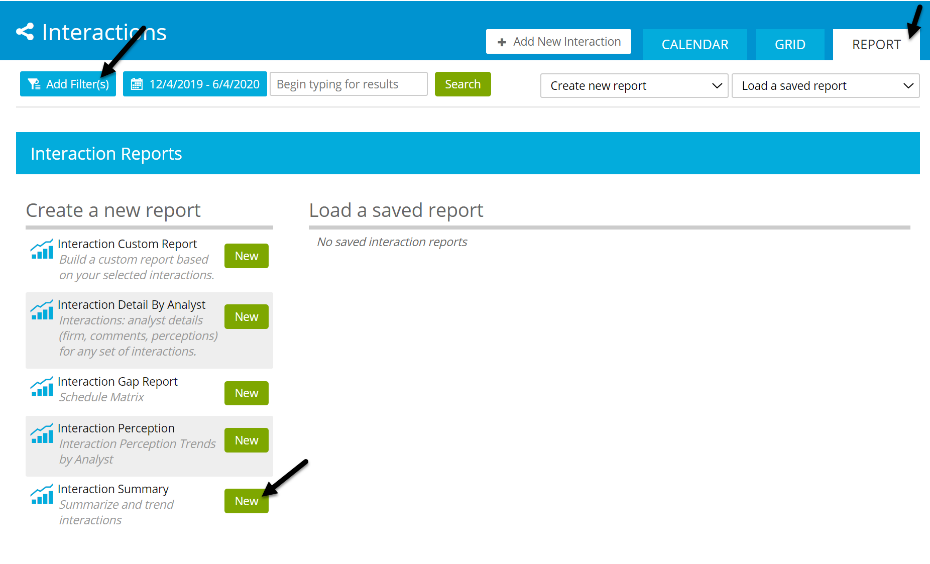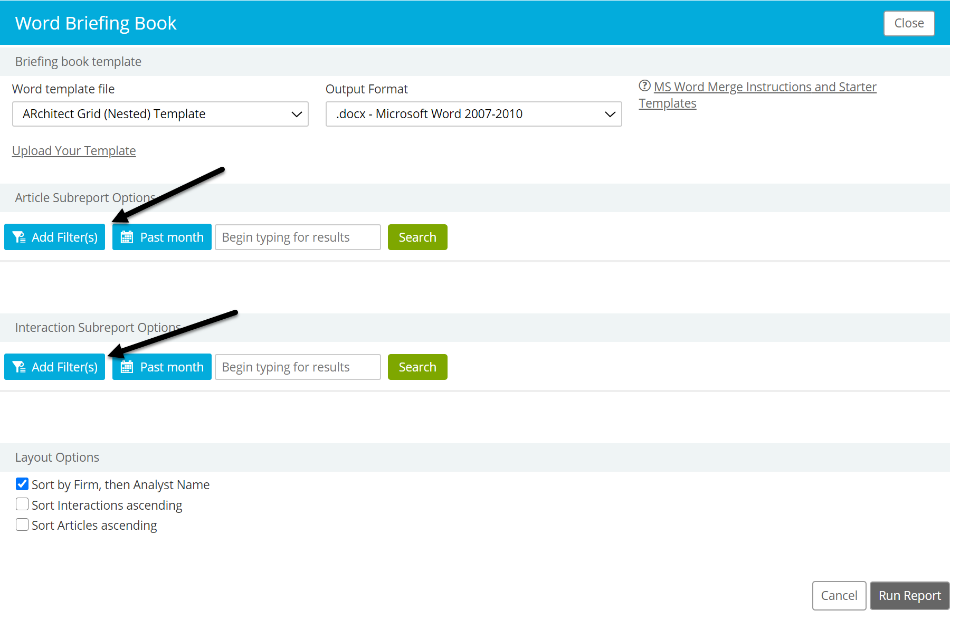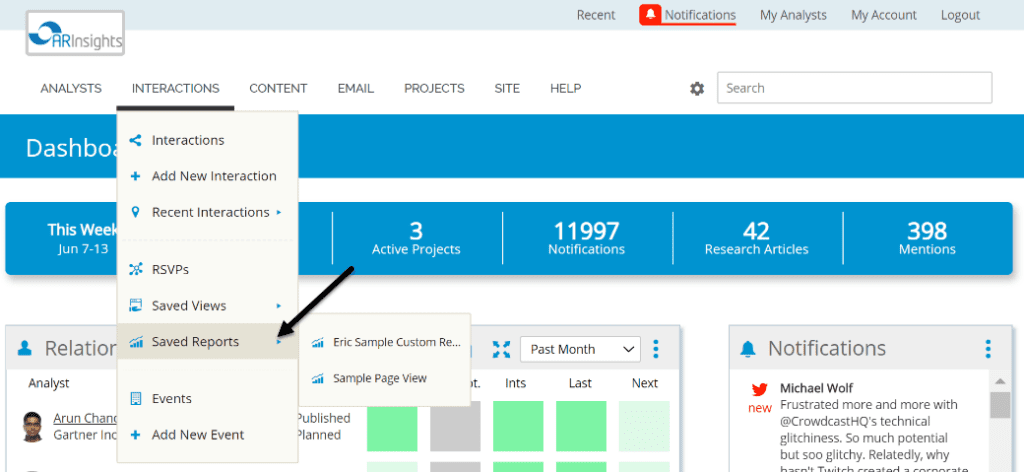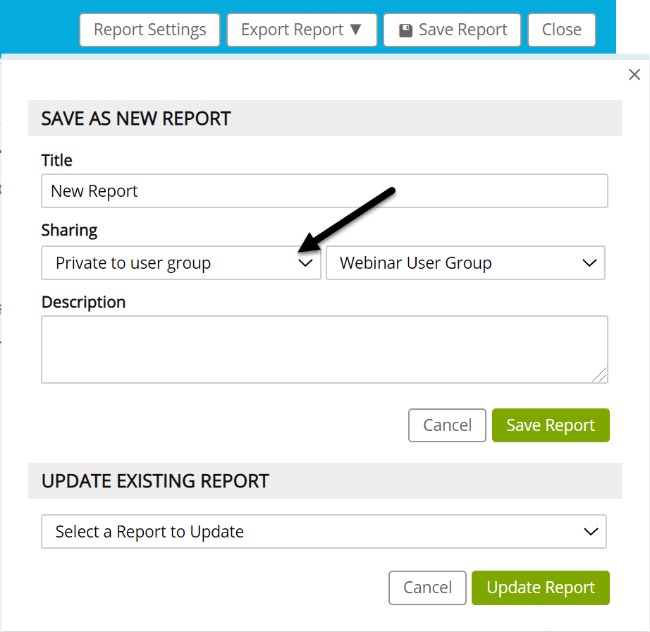Knowing where your work stands is crucial to making an action plan to reach your goals. To do so, you need a way to measure how your activities are progressing as well as a means to measure the results. In episode 6th of the Learning Series, Reports Made Easy, we covered how to create insightful ARchitect reports for your activities, company mentions, and how to include them in briefing documents for future use. Below are the 5 ways to gain valuable AR insights on your program in a pinch.
1. Monitor your relationship growth
Evaluate the progress your team has made with your analysts by using Interaction reports. To do so, click on the Interaction Summary report.

Once you select new, you will have a variety of options to group interactions like by firm, analyst, coverage, and many other options to evaluate your work as well as your teams. In the settings, you will also have filters to exclude certain topics like emails and can select your date range.
Tip: If you want to see which of your analysts you are not interacting with, filter the Interaction Summary report by one of your analyst groups and group by Analysts. Check the box that say “Show 0 values for ALL analysts” and run the report.
2. Track your mentions
To see how your internal work is translating into company mentions, you can create an Article report to evaluate your results. This will pull in data from Premium Content on research, blogs, quotes, and tweets from your selected analysts. To create this report:
1. Select on an Article Summary report
2. Filter for your company name and choose your time frame
3. Select Analysts as your grouping in the Report settings
If you want to look at your mentions over a large amount of time without your report looking clustered, uncheck the “Show All Data” box and limit your search to the top 15 items.
3. Evaluate your competitors
Now that you can find reports on your progress and your mentions, you can create a report to understand your share of voice among your competitors. To do so, click New on Article Summary report like you did before. Add your competitors names as coverages in the filters then, select group by coverage in the settings. You can now monitor your mentions compared to your competitors.
4. Translate insight into documents
Congrats! You have now set up a few very valuable reports to use and share with your team. If you need these reports for a meeting with an analyst, you can include them in your briefing documents. When you are creating a Word Briefing Book in ARchitect, scroll down to the subreport options and add filters to generate the Articles and Interactions you would like included.

If you need more help with Briefing Books, be sure to check out Keeping It Brief: Briefing Books In Minutes from a previous episode of the Learning Series.
5. Save quality reports for quick use
Now that you’re a pro at making useful reports for your company, be sure to follow some basic guidelines so that you can quickly access these reports at a moment’s notice:
1. Be sure to click “Save” on your reports so you can easily access them for future use. You can easily access them from the menu like this:

2. For larger groups, using sharing settings can really benefit keeping your reports organized so there is not an overflow of reports between departments. When saving, select to share with private user group.

Have any more questions about setting up reports? Contact our support team for more help.




